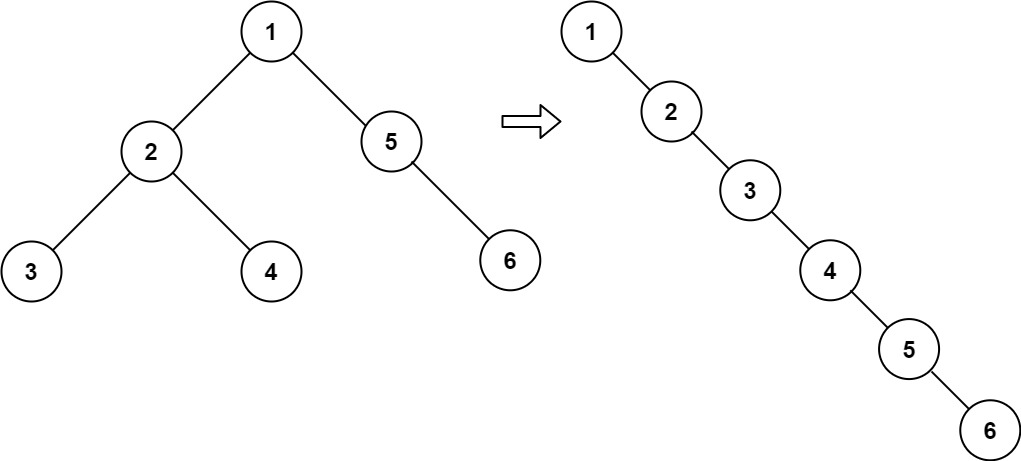LeetCode-in-All
114. Flatten Binary Tree to Linked List
Medium
Given the root of a binary tree, flatten the tree into a “linked list”:
- The “linked list” should use the same
TreeNodeclass where therightchild pointer points to the next node in the list and theleftchild pointer is alwaysnull. - The “linked list” should be in the same order as a pre-order traversal of the binary tree.
Example 1:

Input: root = [1,2,5,3,4,null,6]
Output: [1,null,2,null,3,null,4,null,5,null,6]
Example 2:
Input: root = []
Output: []
Example 3:
Input: root = [0]
Output: [0]
Constraints:
- The number of nodes in the tree is in the range
[0, 2000]. -100 <= Node.val <= 100
Follow up: Can you flatten the tree in-place (with O(1) extra space)?
Solution
/**
* Definition for a binary tree node.
* public class TreeNode {
* public var val: Int
* public var left: TreeNode?
* public var right: TreeNode?
* public init() { self.val = 0; self.left = nil; self.right = nil; }
* public init(_ val: Int) { self.val = val; self.left = nil; self.right = nil; }
* public init(_ val: Int, _ left: TreeNode?, _ right: TreeNode?) {
* self.val = val
* self.left = left
* self.right = right
* }
* }
*/
class Solution {
func flatten(_ root: TreeNode?) {
var values: [Int] = []
getAllValues(root, &values)
let linkedList = TreeNode()
var currLink: TreeNode? = linkedList
for index in 0..<values.count {
currLink?.right = TreeNode(values[index])
currLink = currLink?.right
}
root?.right = linkedList.right?.right
root?.left = nil
}
private func getAllValues(_ curr: TreeNode?, _ values: inout [Int]) {
guard let curr = curr else { return }
values.append(curr.val)
if let left = curr.left {
getAllValues(left, &values)
}
if let right = curr.right {
getAllValues(right, &values)
}
}
}

